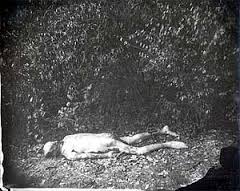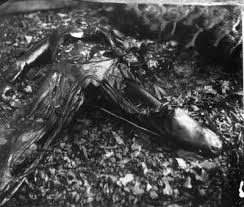In the 6th stage of decomposition, true decomposition or “biotic decomposition”, takes place. Biotic decomposition is breakdown of the body’s components into smaller and smaller components until the organic body is gone. This process is caused by living organisms, usually microorganisms. When the body is broken down by other, faster means such as cremation, alkaline hydrolysis/resomation, promessa, or other physical/chemical process, it is refered to as “abiotic decomposition”. The speed and success of biotic decomposition, as with most stages of the decomposition process, relies on many factors. Generally speaking, conditions which aid in the previous stage, Putrefaction also aid in biotic decomposition. The amount of bacteria in the body at time of death and ability to produce more bacteria postmortem plays a large role. For instance, if you eat a lot of meat, your corpse will contain and produce higher levels of bacteria than a vegan. The bodies of deceased newborns who have never been fed decompose very slowly because in most cases, they are “sterile”, or mostly void of bacteria in their system. However, if a newborn passes away but has been fed, their body tends to decompose much faster than average. If a corpse has been mutilated or obtained large, open wounds decomposition will take place more quickly because it allows easy entry for insects and microorganisms whereas clothing may slow the process. If a body is buried after beginning to decompose somewhat, it will complete more quickly than if the body was buried soon after death. Embalming will delay the process, as is its function, but if the body is left to the elements in open air with scavengers nearby to help the body breakdown, decomposition will complete very rapidly.
Decomposition begins and ends slower in water than in open air. Warm, fresh and/or stagnant water aid slightly in the process, while cold water, salt water and/or running water slow decomposition. Deep water may cause a delay in the onset of biotic decomposition. Water contaminated by sewage will speed up the process. When in water, the skin on the hands and feet of the cadaver may become swollen and bleached. Within 2-4 days, “sleeving” becomes possible. Sleeving, also called “skin slippage”, refers to the loosening of decaying skin to the point that it will slough off in one piece, or made able to pull off as though it were a sleeve. After several weeks in the water, this skin can easily by stripped off, or sleeved, by the current or contact with objects such as rocks. Once skin slippage begins and the upper layer of epidermis has been sleeved off, it is incredibly difficult, if not impossible to obtain fingerprints in order to identify the deceased. Mold can also begin to form on a deceased body in water or a moist area, but usually only on exposed patches of skin. Generally, bodies left in water do not remain intact long due to crustaceans, fish, and water rats feeding on the corpse. “Casper’s Law”, also known as “Casper’s Ratio” suggests that if all other factors (clothing, contents of digestive system, lesions/abrasions, weather conditions, temperature, etc) is equal, bodies with free access to open air decompose twice as fast as in water, and eight times as fast as when buried.
Find out what happens before Biotic Decomposition in Stage 1: Pallor Mortis, Stage 2: Algor Mortis, Stage 3: Rigor Mortis, Stage 4: Livor Mortis and Stage 5: Putrefaction
and in the final stage of decomposition, Stage 7: Skeletonization
Follow us on Twitter @PostMortem_post
See more of Sally Mann’s series Body Farm
If you enjoyed this article, you may also like: Everybody Poops: The Post-Mortem Edition, Demystifying the Process of Dying and Burying the Dead is Killing the Planet







